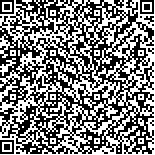周璐,唐丽亚,蒋琼,等.运动预处理对脑缺血再灌注损伤大鼠缺血区脑组织血管新生及HIF-1α和VEGF蛋白表达的影响[J].中华物理医学与康复杂志,2024,46(1):1-6
扫码阅读全文

|
| 运动预处理对脑缺血再灌注损伤大鼠缺血区脑组织血管新生及HIF-1α和VEGF蛋白表达的影响 |
|
| |
| DOI:10.3760/cma.j.issn.0254-1424.2024.01.001 |
| 中文关键词: 缺血再灌注 运动预处理 血管新生 缺氧诱导因子 血管内皮生长因子 |
| 英文关键词: Ischemia Reperfusion Exercise preconditioning Angiogenesis Hypoxia Vascular endothelial growth factors |
| 基金项目:湖南省自然科学基金青年项目(2021JJ40007);湖南中医药大学中西医结合一流学科开放基金项目(2020ZXYJH56) |
|
| 摘要点击次数: 3949 |
| 全文下载次数: 4387 |
| 中文摘要: |
| 目的 观察运动预处理对脑缺血再灌注损伤大鼠缺血侧脑组织缺氧诱导因子-1α(HIF-1α)和血管内皮生长因子(VEGF)的影响,探讨运动预处理通过促进血管新生改善缺血再灌注损伤的可能机制。 方法 采用随机数字表法将36只SD雄性大鼠分为假手术组、模型组和运动预处理组,每组12只。3组大鼠给予适应性跑步训练3 d后,运动预处理组给予正式跑步训练,速度15 m/min,每天1次,每次30 min,持续14 d;假手术组与模型组大鼠不给予其它处理。正式跑步训练结束后,模型组和运动预处理组大鼠采用Zea-Longa栓线法加以改良制备大脑中动脉栓塞(MCAO)再灌注大鼠模型,假手术组仅切开颈部皮肤,暴露右侧颈动脉。造模麻醉清醒后,采用Zea-Longa评分进行神经功能缺损评分;造模24 h后,3组大鼠均采用Zea-Longa评分和改良的神经严重程度评分(mNSS)进行神经功能缺损评分,TTC染色法检测脑相对梗死面积,HE染色观察缺血侧大脑皮质组织形态学改变,免疫组化法观察缺血侧大脑皮质CD31、HIF-1α和VEGF的表达情况。 结果 ①造模麻醉清醒后,模型组和运动预处理组大鼠Zea-Longa评分均较假手术组有明显增高(P<0.01),且模型组与运动预处理组相比,组间差异无统计学意义;②造模24 h后,模型组Zea-Longa评分、mNSS评分、脑相对梗死面积均较假手术组显著增高(P<0.01);与模型组相比,运动预处理组Zea-Longa评分(P<0.05)、mNSS评分(P<0.01)、脑相对梗死面积(P<0.05)均明显降低;③HE染色显示,与假手术组相比,模型组大鼠缺血侧大脑皮质出现组织疏松、神经细胞数量减少、胞核溶解、呈空泡状等病理学改变;与模型组相比,运动预处理组大鼠缺血侧大脑皮质病理学改变减轻;④免疫组化显示,与假手术组相比,模型组大鼠缺血侧大脑皮质中CD31(P<0.05)、HIF-1α(P<0.01)和VEGF(P<0.05)显著升高;与模型组相比,运动预处理组CD31(P<0.01)、HIF-1α(P<0.01)和VEGF(P<0.05)进一步升高。 结论 运动预处理可有效促进脑缺血后血管新生,减轻脑缺血再灌注损伤;其作用机制可能与运动预处理激活了HIF-1α或VEGF信号途径有关。 |
| 英文摘要: |
| Objective To observe any effect of exercise preconditioning on the levels of hypoxia-inducible factor-1α (HIF-1α) and vascular endothelial growth factor (VEGF) in the brain tissue of rats after induced cerebral ischemia and reperfusion, and how it might promote angiogenesis. Methods Thirty-six male Sprague-Dawley rats were randomly divided into a sham-operation group, a model group and an exercise preconditioning group, each of 12. After adaptive running training for 3 days, the exercise preconditioning group ran daily for 30 minutes at 15m/min for 14 days, while the other two groups did not exercise. Middle cerebral artery occlusion and reperfusion were then induced in the model and exercise preconditioning groups using the modified Zea-Longa suture method. Rats in the sham-operation group were only cut open to expose the right carotid artery. Right after the modeling, and again 24 hours later neurological deficit was evaluated using the Zea-Longa score and modified neurological severity scoring (mNSS). Infarct sizes were measured using 2,3,5-triphenyl tetrazolium chloride staining. Any morphological changes were noted using hematoxylin and eosin (HE) staining, and the expression of CD31 protein, hypoxia-inducible factor-1α and vascular endothelial growth factor in the ischemic cerebral cortex were quantified immunohistochemically. Results Right after the modelling, compared with the sham-operation group, the average Zea-Longa scores of the model and exercise groups had increased significantly, but were not significantly different from each other. Twenty-four hours later the average Zea-Longa score, mNSS score and relative cerebral infarction area of the model group had increased significantly compared with the sham-operation group, while the exercise preconditioning group′s averages had decreased significantly. The HE staining showed that compared with the sham-operation group, pathological changes such as loose tissue, reduced number of nerve cells, nucleolysis, and vacuolization of the cerebral cortex on the ischemic side were found in the model group. Compared with the model group, the pathological changes in the exercise preconditioning group were less serious. The levels of CD31 protein, HIF-1α and VEGF in the ischemic cerebral cortexes of the model group had by then increased significantly. But compared with the model group, those levels had increased more in the exercise preconditioning group. Conclusion Exercise preconditioning can effectively promote angiogenesis after cerebral ischemia and reduce chronic injury. That may be related to the activation of the HIF-1α and/or VEGF signaling pathways. |
|
查看全文
查看/发表评论 下载PDF阅读器 |
| 关闭 |
|
|
|